By Glenn Barnett
In November 1941, the U.S. Asiatic Fleet weighed anchor in Shanghai, China, for the last time. Alarmed by the growing hostility and aggressiveness of the Japanese, Admiral Thomas Hart ordered the outnumbered and outgunned American vessels moved to the relative safety of Manila Bay in the Philippines.
Admiral Hart sought to coordinate Army Air Corps reconnaissance flights with his naval activity. General Douglas MacArthur, the commander of American and Philippine forces, would have none of it. He refused to allow cooperation and coordination among the services. He believed that all forces—naval, air, and land—should operate under a single command: his command. Nothing short of that was acceptable.
With the beginning of hostilities, the army’s planes were destroyed on the ground and the naval base at Cavite was bombed out of action. Manila Bay became untenable for the navy. Orders from Washington, D.C., instructed Admiral Hart to move his ships to the temporary safety of Java. General MacArthur accused Hart of desertion.
MacArthur might have been able to persuade Admiral Hart to remain and fight alongside him if they had established a working relationship. The imperious general personified the interservice rivalry then burgeoning between the army and the navy. There was no love lost between the two men. Leaving Manila Bay was an easy order for Admiral Hart to follow.
‘America’s First Soldier’
By the end of December, American resistance on Guam and Wake had ceased and the only place in the South Pacific where the American army continued to fight the Japanese was in the Philippines. General MacArthur became a hero back home and was referred to in the press as “America’s First Soldier.” That soldier was demanding assistance, which could only come by sea. He continually requested that massive convoys of men and materiel be sent to the defense of the Philippines. He wanted the aircraft carriers that had escaped destruction at Pearl Harbor to ferry fighter planes to him.
MacArthur’s insistence was too much for the navy brass. Fleet Admiral Ernest King, the Navy’s ranking officer during the war, would never agree to give control of fleet carriers to MacArthur. The thought of this singular army officer controlling the navy’s only real offensive assets was unbearable. In King’s mind, and in those of many other naval officers, the only weapons that stood between the Japanese and the west coast of the United States were those precious few aircraft carriers.
In the Far East, the Japanese were much too dominant in the air, on the ground, and at sea for America’s carriers to be risked on some quixotic adventure of MacArthur’s. In Washington, the gloomy assessment was that the Philippines were doomed. Yet, officially the government told MacArthur that it would sustain him. On Bataan and Corregidor wild rumors flew about of 100-mile-long convoys threading their way into Manila Bay to relieve the hard-pressed garrison. But other than the occasional submarine, no supplies were forthcoming.
In Washington, MacArthur had become something of a hot potato. He had to be ordered out of the Philippines for the sake of public opinion, if nothing else. President Roosevelt appointed him commander of all American and Allied forces in the South Pacific and ordered him to Australia to take up his new post.
Somehow MacArthur had deluded himself into thinking that all of the ships, supplies, and reinforcements that had been promised him in the Philippines were awaiting him in Australia. Upon his arrival in Sydney, he learned the bitter truth. Most of the Australian army was busy fighting with the British in North Africa, and their navy was scattered about the Atlantic. The American presence on the vast continent consisted of bits and pieces of National Guard units not yet fully assembled or trained.
Admiral King refused to allow naval personnel and ships to serve under MacArthur’s overall command, so the vast Pacific area was divided into four parts. The navy would run things in the North, Central, and South Pacific theaters, while MacArthur and the army held sway over what would be called the Southwest Pacific, basically Australia, New Guinea, and the Philippines.
In the meantime, the U.S. Asiatic fleet had been largely destroyed in the Battle of the Java Sea. The tattered remains of the fleet made it to Australia, but they amounted to no more than six obsolete destroyers, a damaged light cruiser, and couple of gunboats. Significantly, however, several submarines came through, and these would sorely vex the Japanese in the coming years. These few boats, along with Australian units, formed the nucleus of what would be called “MacArthur’s Navy.”
MacArthur’s Ships Were Bombed by Both the Japanese and Americans
When naval codebreakers learned that a Japanese invasion fleet was headed for the southern coast of New Guinea, the navy dispatched a powerful force to stop it. Admiral King found himself in the awkward position of calling upon MacArthur to assist the navy by deploying his ships to the Coral Sea to help repulse the enemy. In the resulting Battle of the Coral Sea, MacArthur’s ships never engaged enemy surface vessels but were bombed by Japanese planes and by American bombers who mistook them for the enemy.
In August 1942, Australian militia and special forces under MacArthur’s command were hard-pressed to turn back Japanese advances in New Guinea. In that month, the U.S. Marines landed on nearby Guadalcanal, stealing the headlines from MacArthur. In November, the Allies landed in North Africa, stealing more headlines. Worse, the commander of the North African campaign, Operation Torch, was MacArthur’s former aide in the Philippines, General Dwight D. Eisenhower.
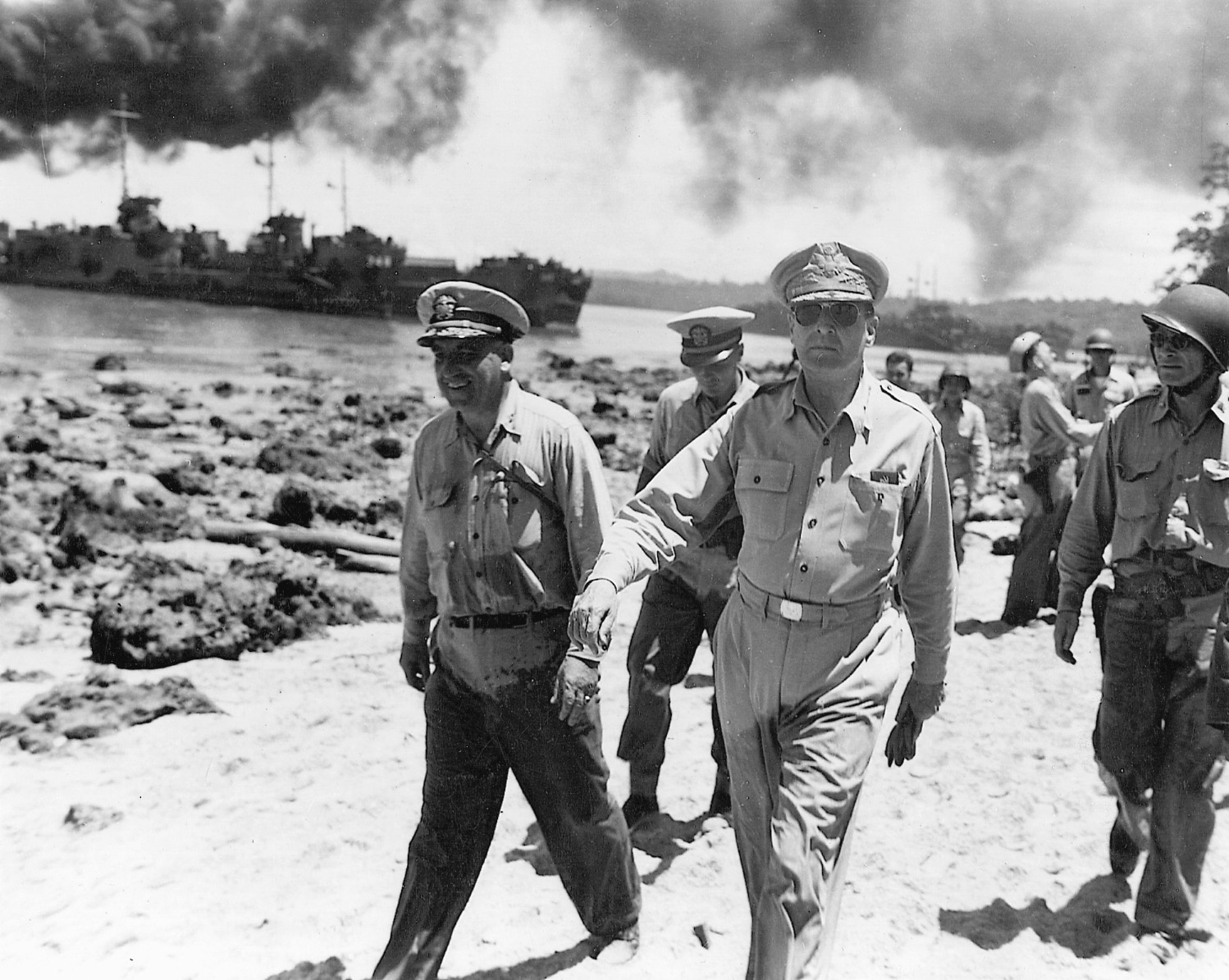
For the proud MacArthur, this was too much. He ordered his forces to lunge at the enemy at Buna on the northeast coast of New Guinea before they were ready. He had to get back in the game. By this time in the war, MacArthur’s Navy consisted of five cruisers, eight destroyers, and 20 submarines. All but six of his submarines would be turned over to the operational control of the navy during the fighting at Guadalcanal. He could not protect the entire continent of Australia with these, let alone begin offensive operations.
The navy’s man on scene in Australia, Rear Admiral Herbert F. Leary, like Hart, did not get along with MacArthur. Leary refused to send his few boats to assist the army on the north shore of New Guinea. Worse, he insisted on reporting directly through the navy’s chain of command to Admiral Chester Nimitz, commander in chief of the U.S. Pacific Fleet, in Hawaii. MacArthur wanted all communication to and from his theater of operations to flow through his headquarters.
Leary was replaced with Admiral Arthur Carpenter to oversee naval operations in the Southwest Pacific. Carpenter and MacArthur were at odds from the outset and Carpenter also refused to support army operations in New Guinea. There were uncharted shoals, and the enemy owned the air, he argued. He too insisted on reporting directly to Admiral Nimitz in Hawaii.
MacArthur turned to Nimitz to support his flagging offensive at Buna. However, the navy had its hands full in the battles around Guadalcanal and could or would not spare him as much as a single destroyer to soften up enemy positions. During the entire battle at Buna, no naval unit larger than a PT boat would appear in support. Buna was the only Allied offensive battle of the Pacific War that was not supported by a naval bombardment. Before airstrips were built, supplies to the troops at Buna were delivered by Australian yachts, native fishing boats, small Dutch freighters, and captured Japanese landing craft. American and Australian casualties at Buna and nearby Gona were frightening and reinforced MacArthur’s conviction that he had to have his own naval force under his control.
MacArthur’s Navy was to be an Amphibious Force
By February 1943, the twin battles at Guadalcanal and Buna ended with the United States and her Allies victorious. It had been previously agreed in Washington that future operations in the Southwest Pacific would be under MacArthur’s command. In that same month, the Navy Department assigned Admiral Daniel E. Barbey to MacArthur’s headquarters to be in charge of amphibious operations. When Darby arrived, and for a few weeks thereafter, the amphibious operations effort consisted only of Barbey and his aide. Out of necessity, MacArthur’s Navy would be an amphibious force, and Barbey would oversee 56 amphibious landings (large and small) during the war.
With an amphibious commander in place, MacArthur now loudly insisted that he needed trained amphibious troops. The Navy relented, sort of. The 1st Marine Division, exhausted and malaria ridden from its protracted struggle on Guadalcanal, was transferred to MacArthur’s command. It would be a long time before the division would be ready for more fighting.
in April 1943, the commander of naval operations in the South Pacific, Admiral William F. “Bull” Halsey, flew to Brisbane to confer with MacArthur. To everyone’s surprise, the two men hit it off. “I liked him the moment I met him,” MacArthur would say of Halsey. Halsey had demonstrated at Guadalcanal that he was not afraid to risk his ships to support ground operations, and MacArthur liked that about an admiral. The two men began an era of interservice cooperation that would advance the war in the Pacific. The Japanese would never achieve a similar level of cooperation between their services.
Admiral Barbey, meanwhile, was ordered to begin practicing amphibious landings on Australian beaches in March. At first, he had little to work with, but when the scheduled 1943 invasion of Europe was cancelled, more ships and men became available.
The slow build-up of troops in Australia began to accelerate, and new types of amphibious craft with strange-sounding acronyms such as LCT, LST, LSM, LCM, LSD, APD, LCVP, and LCI began to arrive. American shipyards were turning out these vessels at a remarkable rate, often without respect to reliability or spare parts. Most newly arrived boats had to spend time in a repair yard to become combat ready, and improvisation was encouraged and necessary. For instance, women’s stockings became reliable air filters and palm logs replaced timber. LST’s were converted to hospital and repair ships.
In June, Barbey’s newly minted Seventh Amphibious Force made its first landings in enemy territory. The islands of Woodlark and Kiriwina in the Solomon Sea were thought to be unoccupied, but no one knew for sure. The landings were timed to coincide with Admiral Halsey’s invasion of New Georgia in order to keep the Japanese guessing. While Halsey covered his landings with five aircraft carriers, battleships, and numerous cruisers and destroyers, MacArthur could only manage his few outdated destroyers and cruisers to screen his landings. The two islands were not occupied by the Japanese, and the landings there became a valuable rehearsal for the future.
In September 1943, the objective would be the outpost of Lae on the east coast of New Guinea. The 9th Australian Division, recently returned from North Africa, was to land there. The men of the 9th were battle-hardened veterans of the fight against Field Marshal Erwin Rommel and his Afrika Korps, but they had never fought in the jungle. Further, this amphibious operation was the first one undertaken by Australian troops since the World War I disaster at Gallipoli in 1915. Naval support consisted of one destroyer, which bombarded the beaches only briefly.
“The Big Auzzies Were Leading the Little Japs Around Like Dogs”
The small Japanese garrison at Lae fled into the jungle, leaving cook pots steaming. The landing was easier than anyone had hoped for, but there would be many more. The Australians were tapped again for the next landing at Finschhafen. Air reconnaissance had reported that the Japanese were sending reinforcements to this small outpost, so plans to invade were moved up. Again the Aussie landing was successful.
An American present at Finschhafen made an observation that echoes today: “One or two Jap prisoners were brought aboard by the Auzzies [sic] with ropes around their necks. The big Auzzies [sic] were leading the little Japs around like dogs.”
Again and again, the Japanese were unable to determine the destination of convoys at sea and were not prepared to resist the landings. This proved to be true when the Allies chose to assault the small town of Arawe on New Britain; It was lightly defended and easily taken. Cape Gloucester on New Britain was the next invasion target for the MacArthur team. This time, the 1st Marine Division was given the assignment. Hardened veterans of Guadalcanal, the men of the 1st were confident of their abilities but scornful of MacArthur and his “navy.” There were no decent transports available to move them, so they were stuffed into the holds of converted liberty ships. But when the time came for “real” naval support, the Marines got it. For the first time, cruisers and destroyers in abundance supported a landing in the Southwest Pacific. Air power plastered the beaches and a small rise dubbed “Target Hill,” which commanded the landing area.
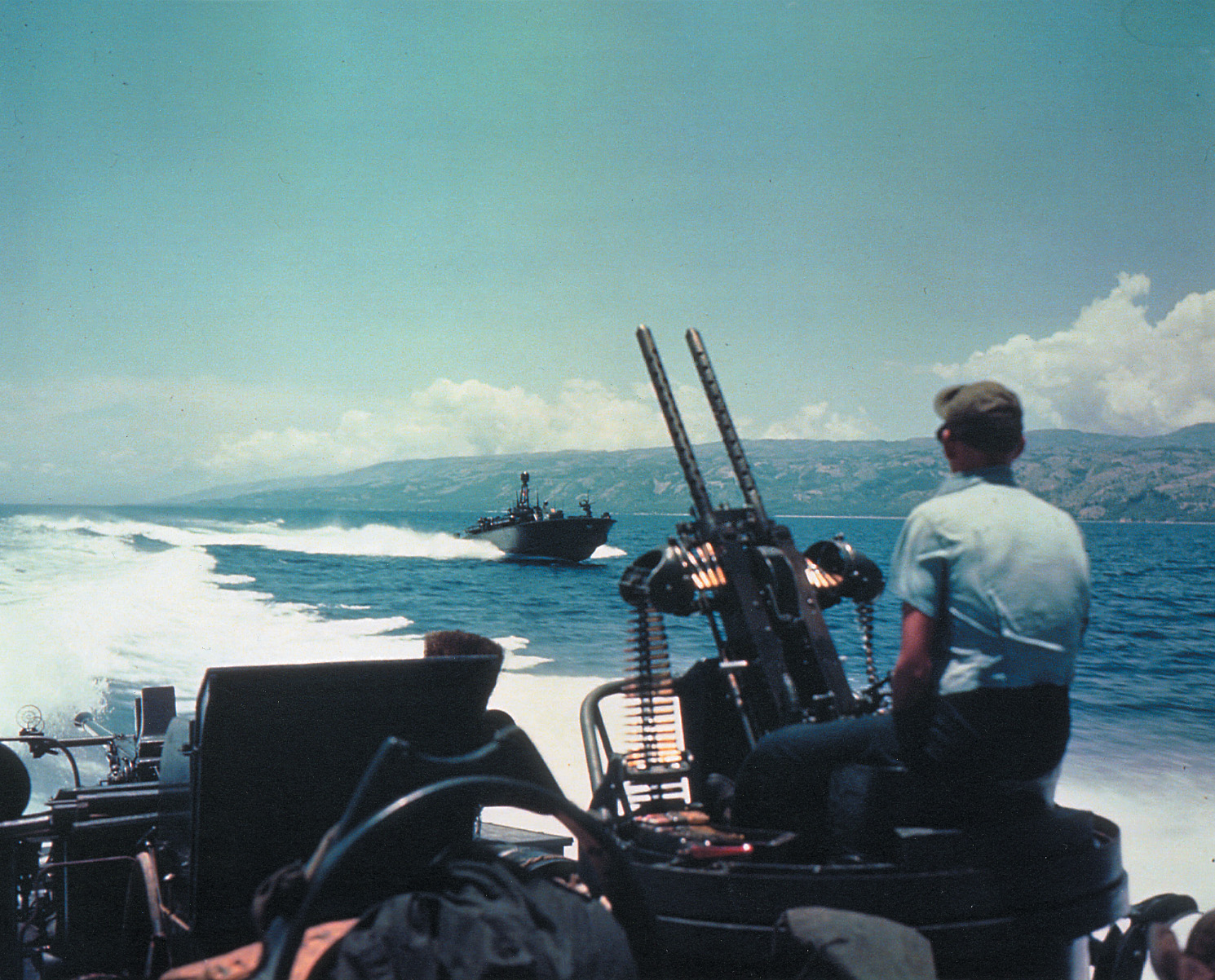
The Cape Gloucester invasion also saw the employment of a new weapon—rockets. Landing craft had been converted to carry and launch rockets preset to fly 1,200 yards. As the LCI (R) moved toward shore, the rockets laid down a rolling barrage in front of the advancing Marines. A few dazed and shell-shocked Japanese were all that remained on the beaches to surrender. Of their four landings in the Pacific, the 1st Marine Division considered Cape Gloucester to be the most initially successful.
Having secured the straits between New Britain and New Guinea, the Allies continued their movement up the north coast of Papua, New Guinea. Six days before the December 26 landing at Cape Gloucester, MacArthur ordered an invasion of Saidor, about 135 miles west of Finschhafen. This time it was the 32nd Division’s turn to go ashore. The 32nd had borne the brunt of the fighting at Buna and was just as battle hardened, if not as famous, as the 1st Marine Division. Bombing, strafing, and naval bombardment eased the landing, and the 32nd met little opposition.
By this time, there was a new naval commander on MacArthur’s staff. Replacing Carpenter, Admiral Thomas Kincaid was the man MacArthur was looking for. Kincaid was not afraid to send his ships into harm’s way to support the amphibious landings. He commanded a much larger force than his predecessors. There were still only three cruisers, but Kincaid commanded 27 destroyers, 18 destroyer escorts, 30 submarines, 8 attack transports, 60 LCIs, 40 LSTs, and numerous support ships. MacArthur’s Navy was now officially known as the Seventh Fleet.
General MacArthur’s operations were also supported by the Fifth Army Air Force, which was commandeded in Australia by Lt. Gen. George Kenney. Kenney’s bombers roamed far and wide, striking at enemy airfields and shipping wherever they were in reach.
Barbey Landed 1,000 Men Against Little Opposition
The Navy liked to run amphibious operations at dawn in order to reach the target beach undetected and begin the assault at daybreak. Army planes could not operate safely at night and would take off at dawn. Since most new amphibious landings occurred near the limit of a fighter plane’s range, air cover over a landing was problematic. Frequently, Japanese planes showed up on the scene before American planes. This situation, and other squabbles, set the naval and air commanders at odds.
The invasion of the Admiralty Islands was a case in point. In February 1944, army reconnaissance planes flew over the island for hours, detecting nothing and receiving no hostile fire. General Kenney advised MacArthur that the enemy had deserted the islands. MacArthur then ordered a reconnaissance in force to determine if the islands could be taken. Barbey landed a thousand men against little opposition. The escorting destroyers and cruisers accompanied the landing ships back to their bases, leaving only one destroyer to cover the landings.
In actuality, the Japanese had not abandoned the islands. They counterattacked that night. They had been on the island all along but were under orders to stay hidden during the day and not to shoot at passing American planes. If it had not been for the single destroyer and her fire support, the American position would likely have been overrun and the invaders thrown into the sea. The resulting loss of morale and momentum could have been disastrous for MacArthur, but his luck held and the Japanese, as they so often did, threw their lives away in fruitless night attacks.
In Washington, D.C., the navy was pushing its case that the main thrust against the Japanese should be through the Central Pacific, bypassing the Philippines and invading Formosa (Taiwan). MacArthur and his allies in the Army argued that because of American ties with the Philippines that country must be liberated first. The general was not waiting for the decision to be made in Washington. He stepped up his efforts to reach the islands to which he had promised to return.
MacArthur’s next amphibious operation would leapfrog several Japanese strongpoints and actually take place outside the range of land-based fighter cover. Hollandia was a small town inside the Dutch half of the immense island of New Guinea, and 500 miles from the nearest Allied base. The town was attacked in April 1944 and easily taken. For this operation, MacArthur had secured the cooperation of Admiral Nimitz, who sent a carrier task force from the Central Pacific to provide air support and protect the landings against enemy fleet activity. As soon as the troops were ashore however, the navy sailed away.
The Japanese were usually at a loss to know where the Americans would strike next, and their forces were scattered in widely separated areas and could not support one another. However, once they recovered from their initial shock, they struck back as hard as they could. The landings at Hollandia were contested in the air, but by this time American carrier-based air superiority was firmly established and only the lucky plane could get through to do damage. Of the 700 ships involved in the Hollandia operation, only one was damaged in action. Because many of those ships were borrowed from the navy and had to be returned, MacArthur still operated on a shoestring when it came to continuing naval support and depended on the Navy during big operations.
Destroying Over 60 Aircraft in a Single Bombing Run
In May 1944, the Americans attacked a small offshore island called Biak, hoping to capture its important airstrip. This time the Japanese were not surprised, and no American carrier fleet appeared in support. The enemy put up its stoutest defense yet seen. MacArthur still had only a few cruisers and destroyers available, and air superiority was actually threatened for a time.
A lucky Japanese bomber once caught 100 American planes lined up wingtip to wingtip and destroyed over 60 of them. The Japanese, however, had too few aircraft available to exploit any temporary advantage, while losses in American planes were easily replaced.
By August 1944, all of northern New Guinea was in Allied hands. In just one year of relentless pressure on the enemy, MacArthur’s amphibious forces had gobbled up the entire 1,500-mile length of the island, leaving tens of thousands of Japanese soldiers marooned in strongly defended but supply-starved bases.
The Seventh Fleet conducted landings on the Indonesian island of Morotai in September. This small island was halfway between New Guinea and the southern Philippine island of Mindanao, which had been identified as MacArthur’s next objective. The American pre-invasion barrage at Morotai included a new weapon: The chemical agent DDT was sprayed over the swampy jungle to combat insect-borne diseases. Even as American troops stormed the beaches at Morotai, the operation was becoming a backwater in the Philippine campaign.
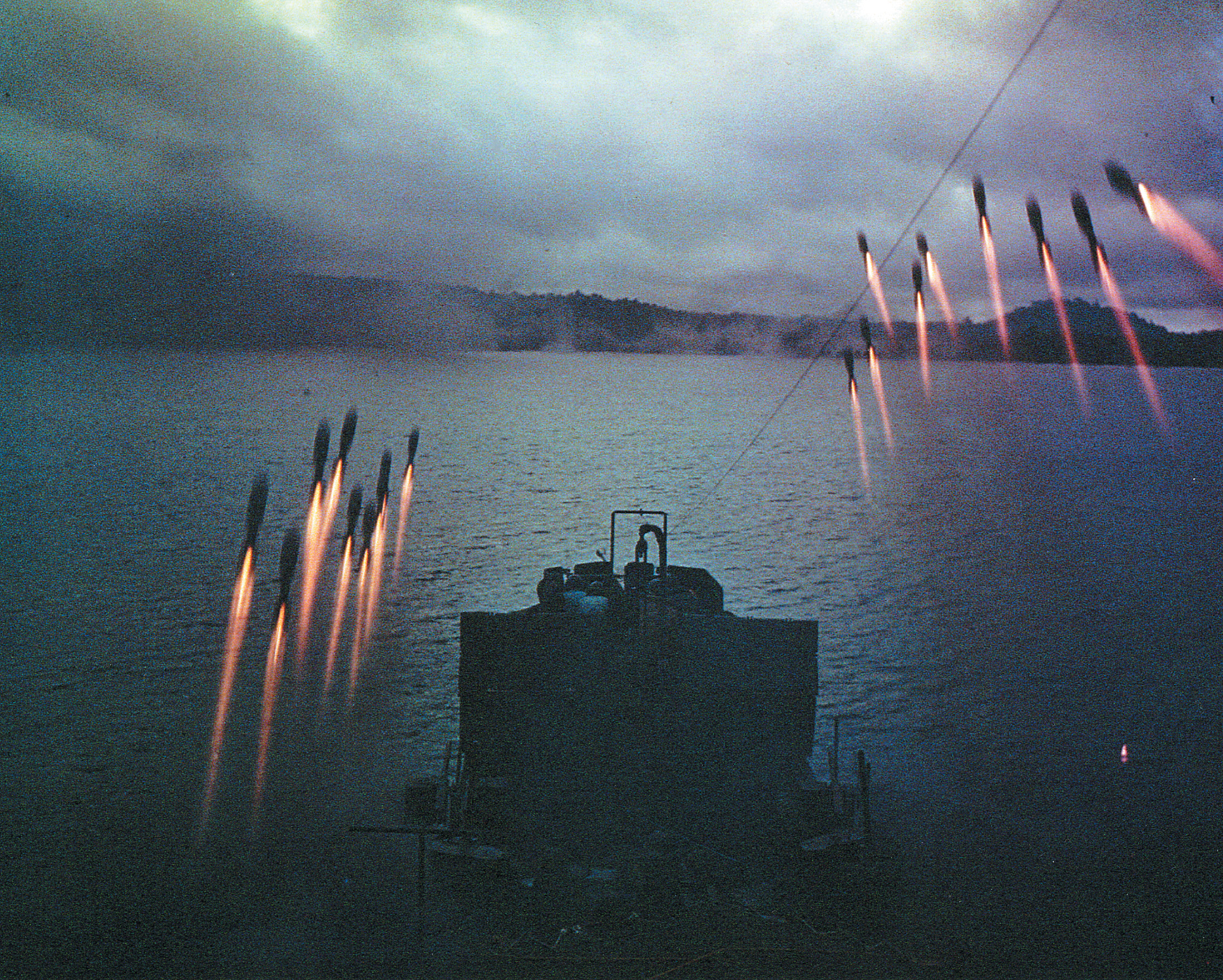
Admiral Halsey was ranging far and wide with the fast aircraft carriers of his Third Fleet. His scouts had discovered that Leyte island in the central Philippines was lightly defended, so he suggested to his boss, Admiral Nimitz, and to MacArthur that Mindanao be bypassed in favor of an invasion of Leyte. This would cut months off MacArthur’s timetable, and he gleefully agreed. Even as he walked the beaches of Morotai on the day of that invasion, he was making plans that would make Morotai irrelevant.
Both Nimitz’s and MacArthur’s forces were to participate in the invasion of Leyte. Significant naval forces were transferred from the Central Pacific to the Seventh Fleet and were under Admiral Thomas Kincaid’s operational control. These included Rear Admiral Jesse Oldendorf’s fire support unit of prewar battleships, some of which were resurrected from the mud of Pearl Harbor, heavy and light cruisers, and destroyers.
Direct air support for the landings was provided by Rear Admiral Thomas L. Sprague’s force of 18 escort carriers, each with a complement of 20 to 30 planes, which were divided into three task forces called “Taffies.” At last, MacArthur had aircraft carriers even though they were small and originally designed for antisubmarine work in the Atlantic. They would prove to be the decisive element in the coming battle.
All forces under MacArthur’s command, no matter which branch of the service they were from, had to coordinate communication through his headquarters. All messages between Oldendorf’s and Sprague’s ships and the outside world had to go through MacArthur’s headquarters where they were decoded, read, recoded, and sent on to their final destinations.
The Largest Collective Naval Battle in History
Even though MacArthur finally controlled significant naval forces, he was not to have the most valuable assets. The Third fleet, under Halsey, retained the fast carriers and battleships, the newest and deadliest technological wonders that were coming to dominate the Pacific. Halsey reported to Nimitz, not MacArthur. At Leyte there was still a divided command, with its ensuing problems of communication and operational priorities.
When the fighting was at its most desperate and urgent and messages flew thick and fast, communications between the two commands could be delayed for up to an hour and a half. The Battle of Leyte Gulf, the largest collective naval battle in history and actually a series of fights between the U.S. and Japanese navies, swirled over thousands of miles of ocean while MacArthur’s operations on the island were in progress.
Enormous logistical challenges existed between the services as well. In Europe, the distance between the English staging areas and the Normandy beaches was often no more than 100 miles, depending on the port of embarkation. For the Leyte invasion, the staging areas in primitive New Guinea outposts were from 1,200 to 2,000 miles distant. Soldiers were packed aboard transports for more than a week. It was a miracle of perfect timing for all the elements to arrive off the right beach at the right time.
As for the Japanese, the Philippines defense served as a bulwark protecting their all important natural resources in Indonesia. It had been their plan from the beginning of the war to bring the American fleet into a pitched battle where it could be destroyed. However, by October 1944, the Imperial Navy was not the formidable force it had been in 1941. It still had powerful surface warships, but its air arm had withered from years of attrition and heavy losses in carriers, planes, and trained pilots.
The landings at Leyte Gulf and the ensuing naval engagements in support of it were the Seventh Fleet’s finest hour. Admiral Oldendorf fought off a southern flotilla of Japanese ships with his ancient battlewagons, decimating the enemy at Surigao Strait. The Taffies, the little escort carriers, at great cost to themselves, blunted the drive of a powerful Japanese force of battleships and cruisers toward the Leyte invasion beaches.
“He’s Still a Fighting Admiral in My Book”
The escort carriers had faced long odds against the Japanese off the island of Samar, partially due to the divided American command structure. Kincaid assumed that Halsey’s powerful Third Fleet was guarding the San Bernardino Strait, through which the Japanese had sailed. Halsey, however, had moved northward from the vicinity of the invasion beaches in pursuit of a Japanese decoy force off Cape Engano.
Halsey’s decision to pursue the decoy force northward is debated to this day, but MacArthur never blamed Halsey for abandoning his watch at Leyte. “Leave the Bull alone,” he once admonished his staff. “He’s still a fighting admiral in my book.”
As usual, once the Leyte beaches were secure and the enemy dealt with, the naval units on loan to the Seventh Fleet sailed away, leaving the forces commanded by Admiral Kincaid and General MacArthur greatly diminished. There were more landings for the Seventh Fleet to make in the Philippines and then in the Dutch East Indies, but MacArthur’s Navy was always a poor cousin as far as the navy brass was concerned.
The last big plan for MacArthur’s command was the invasion of Japan itself. Thankfully for the fighting men of Seventh Fleet, that invasion was not necessary. With final victory in the war with Japan, MacArthur’s Navy had served its awesome purpose and ceased to exist.
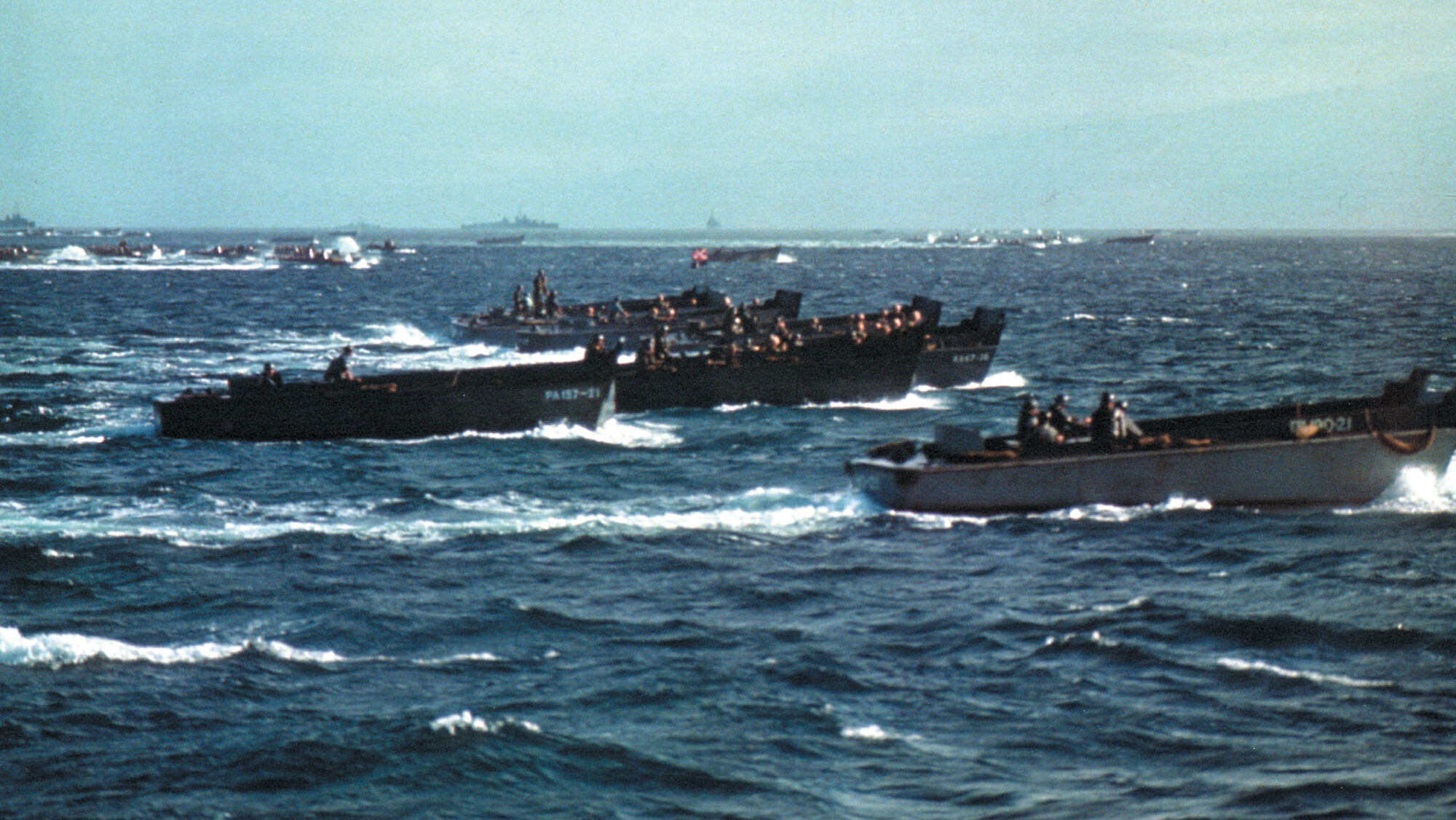
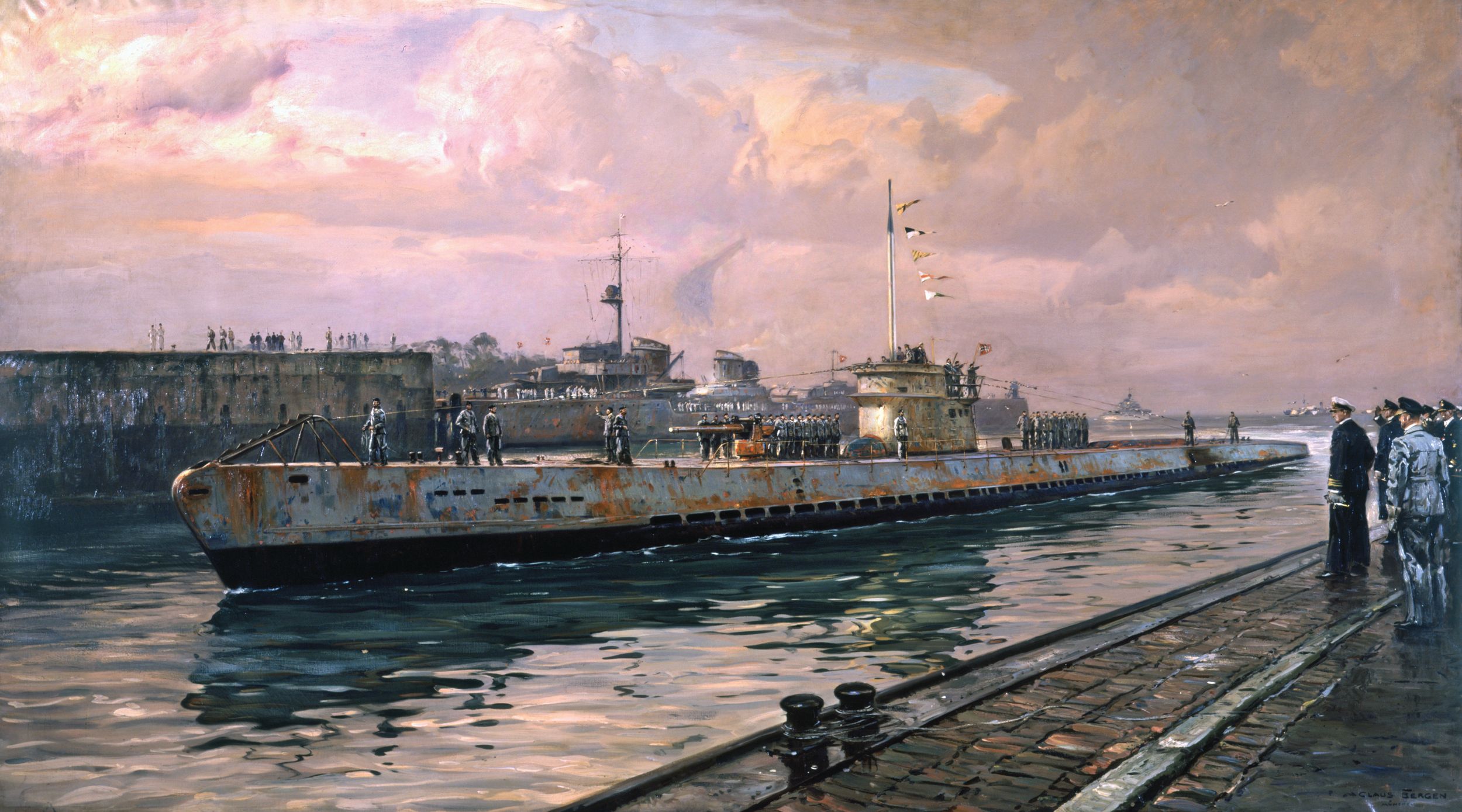
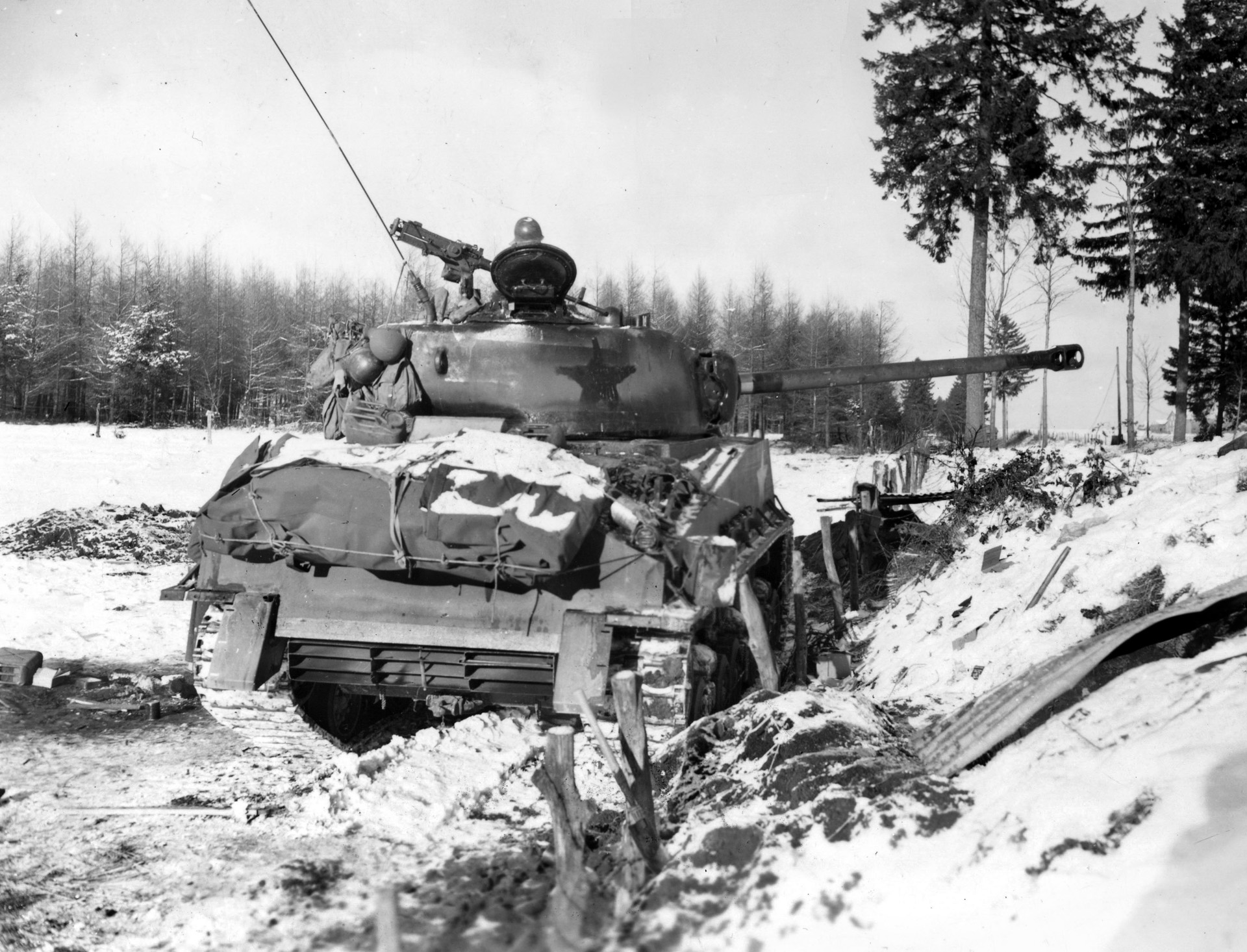
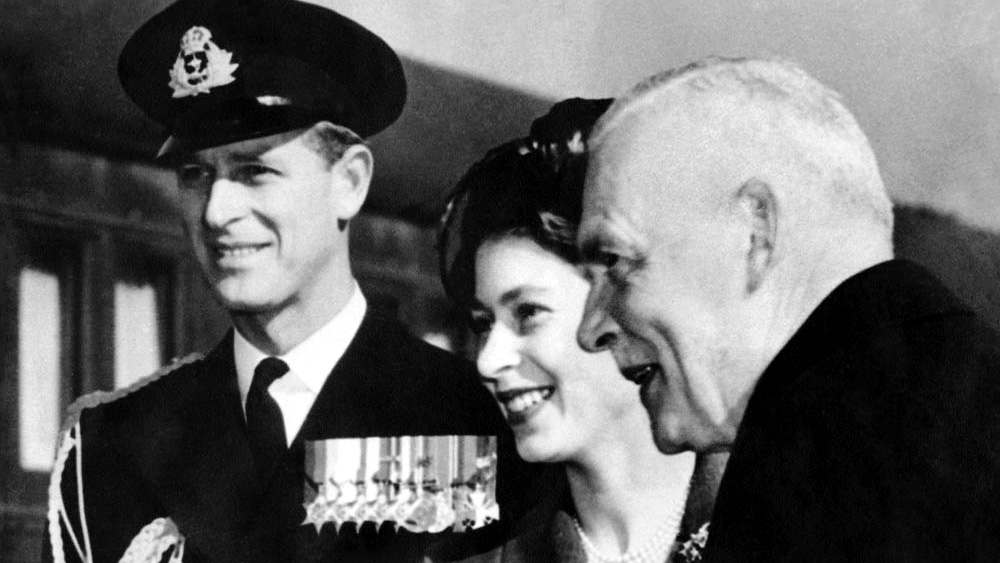
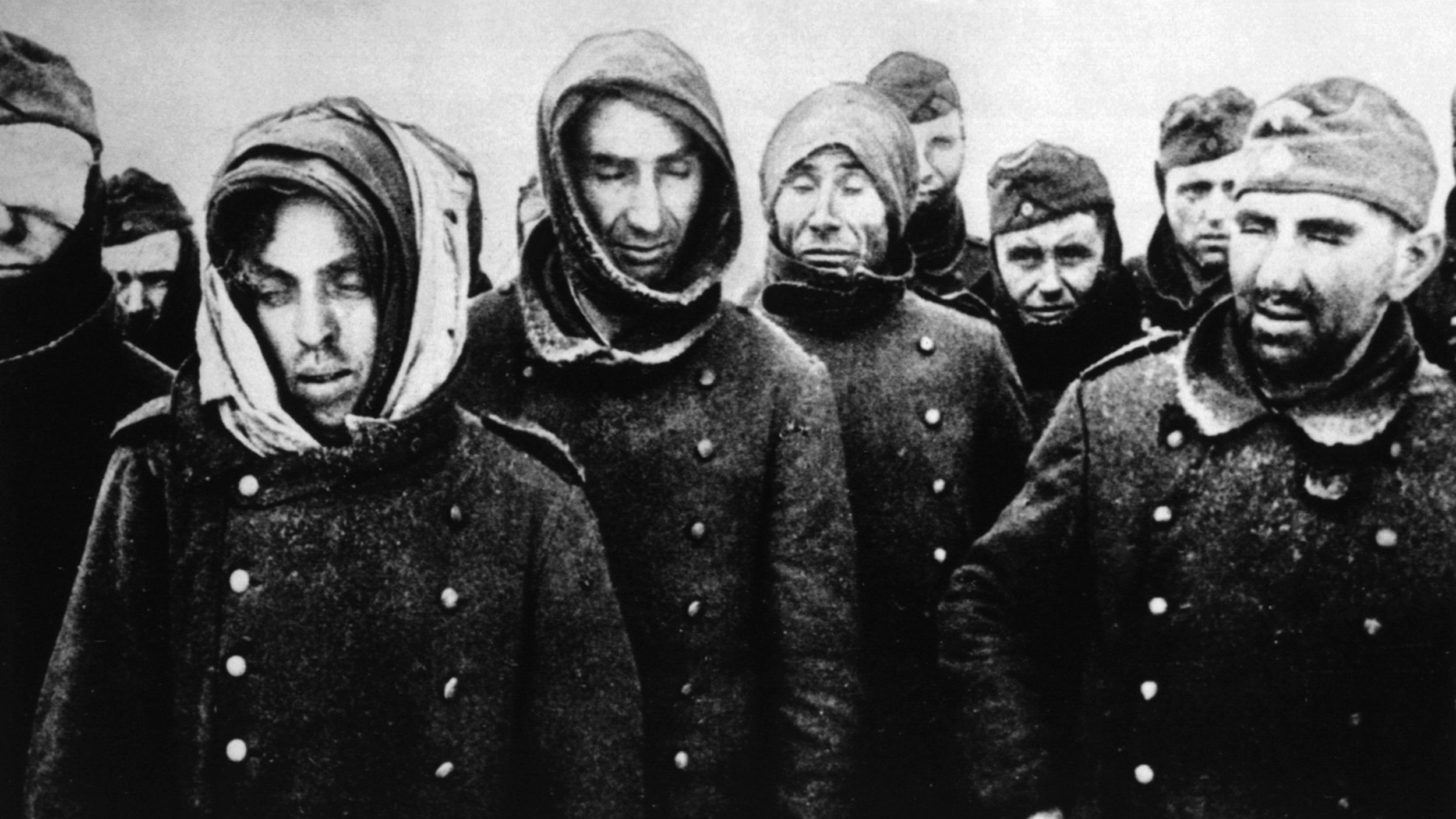
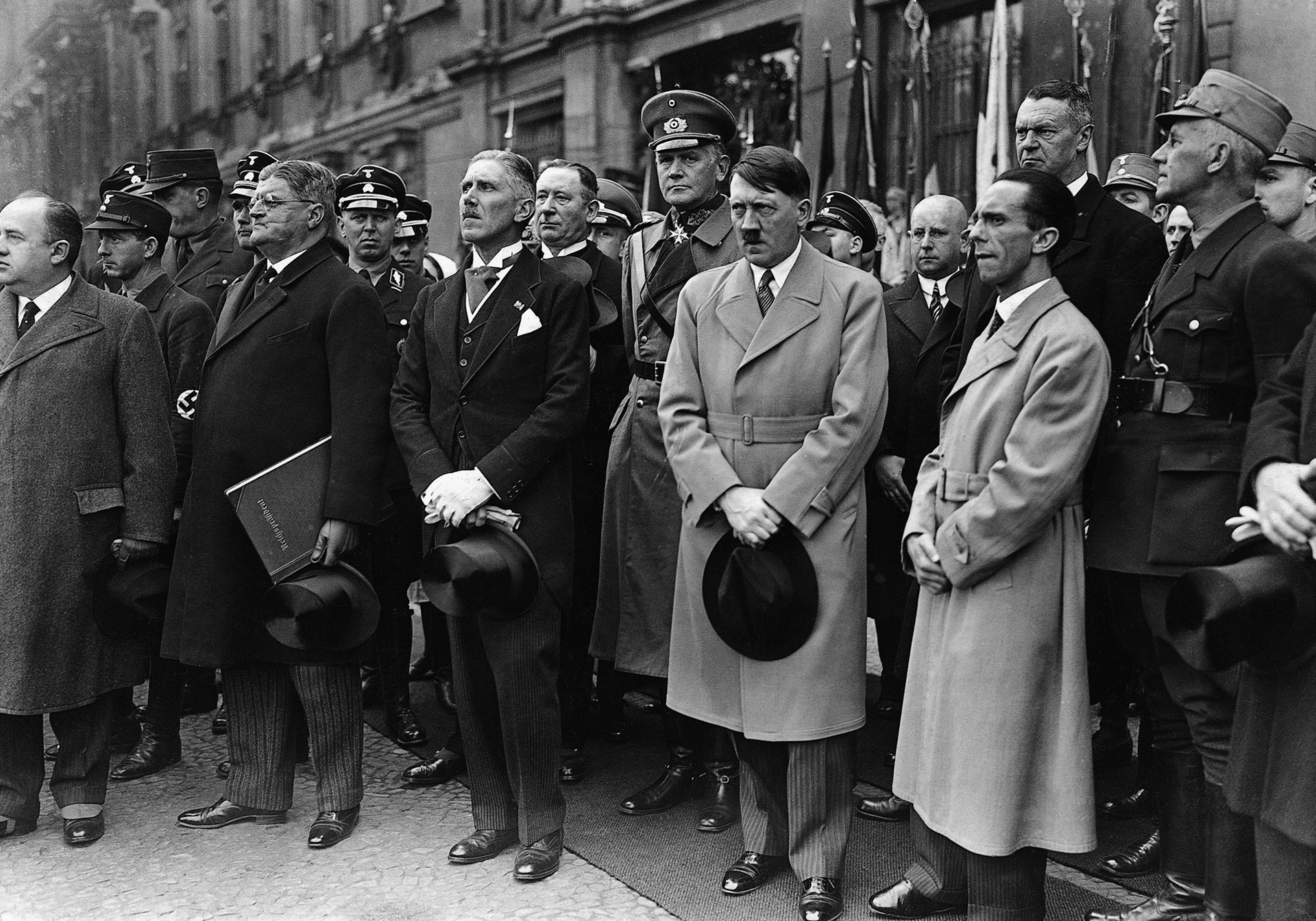
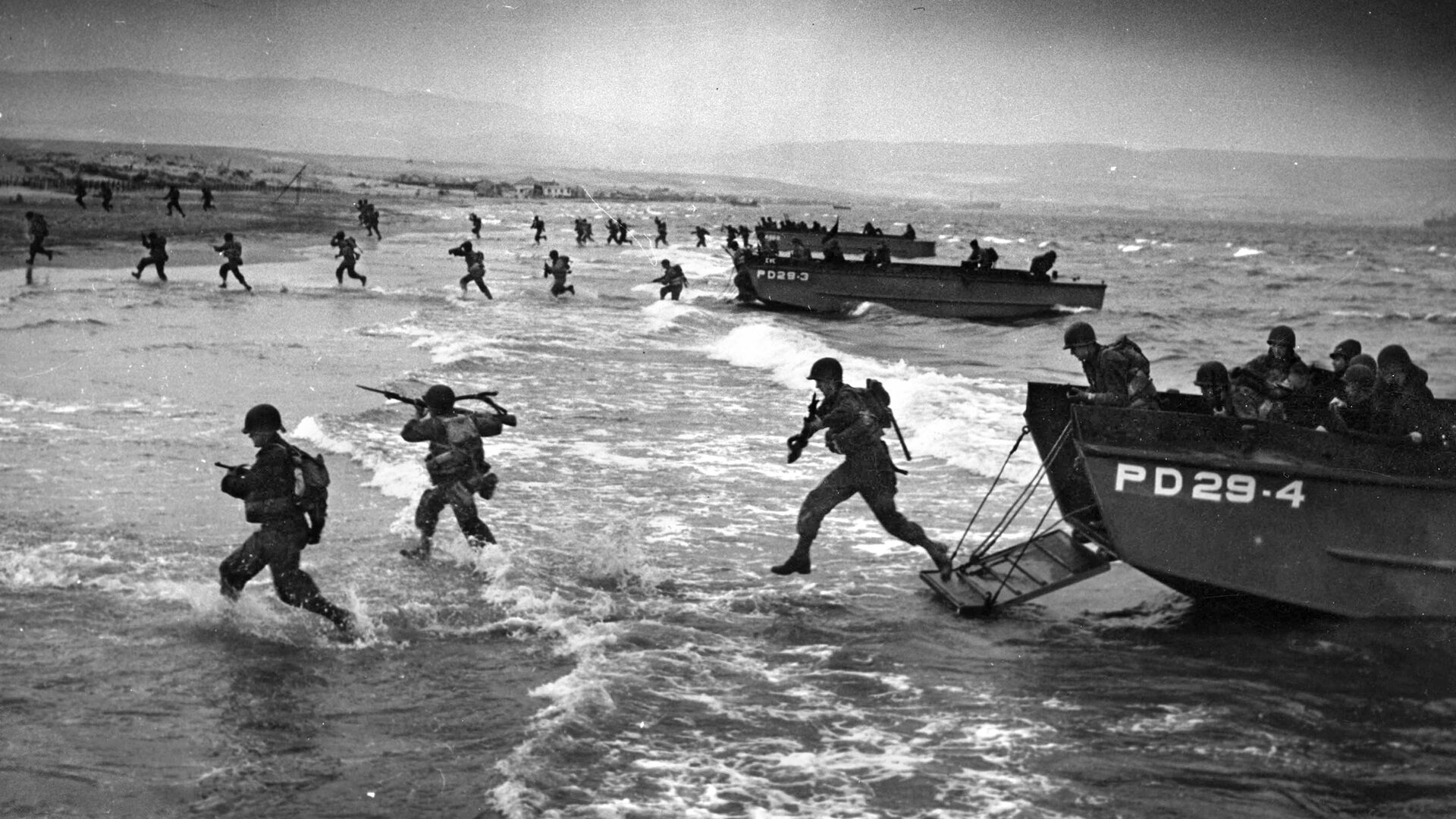
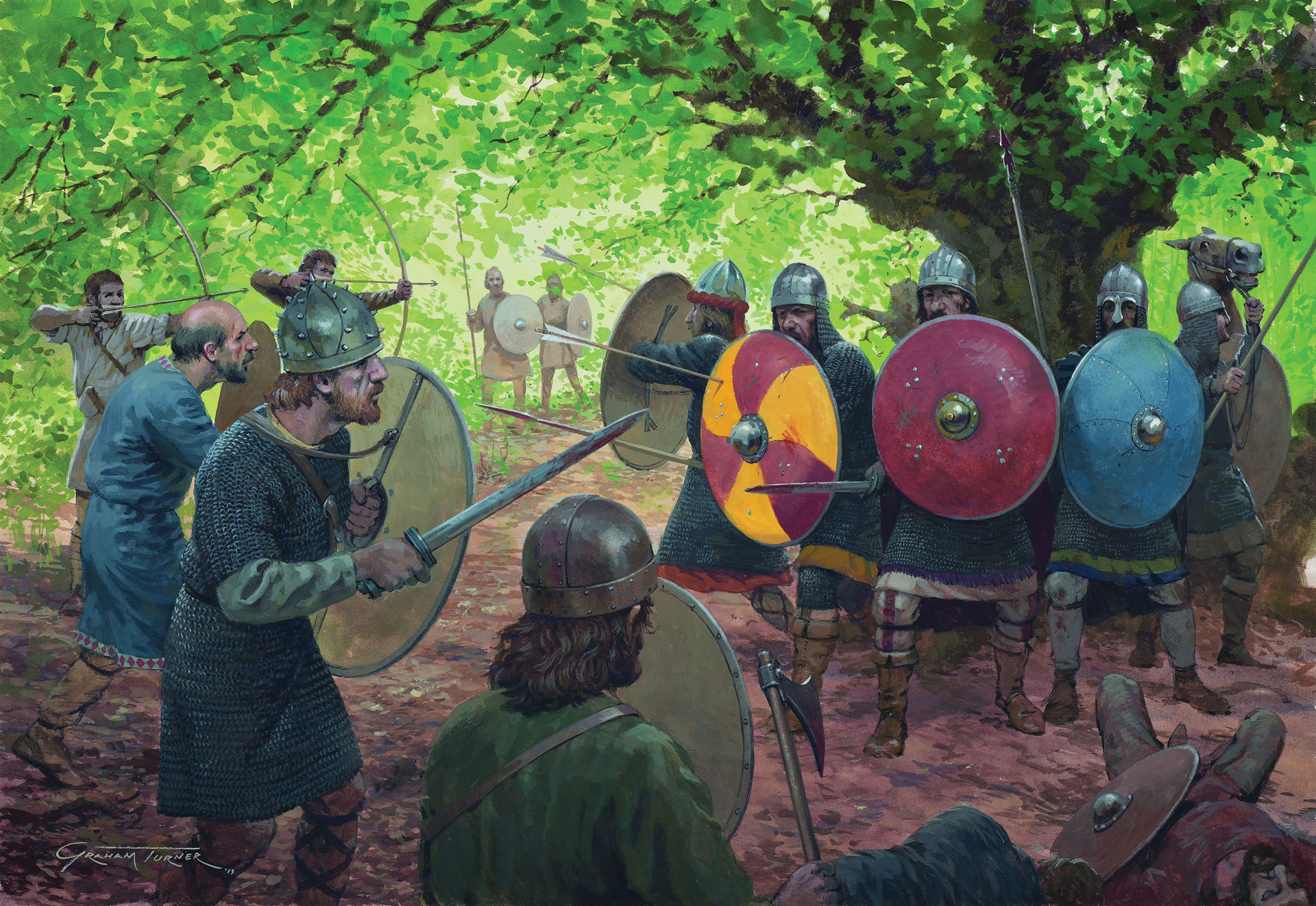
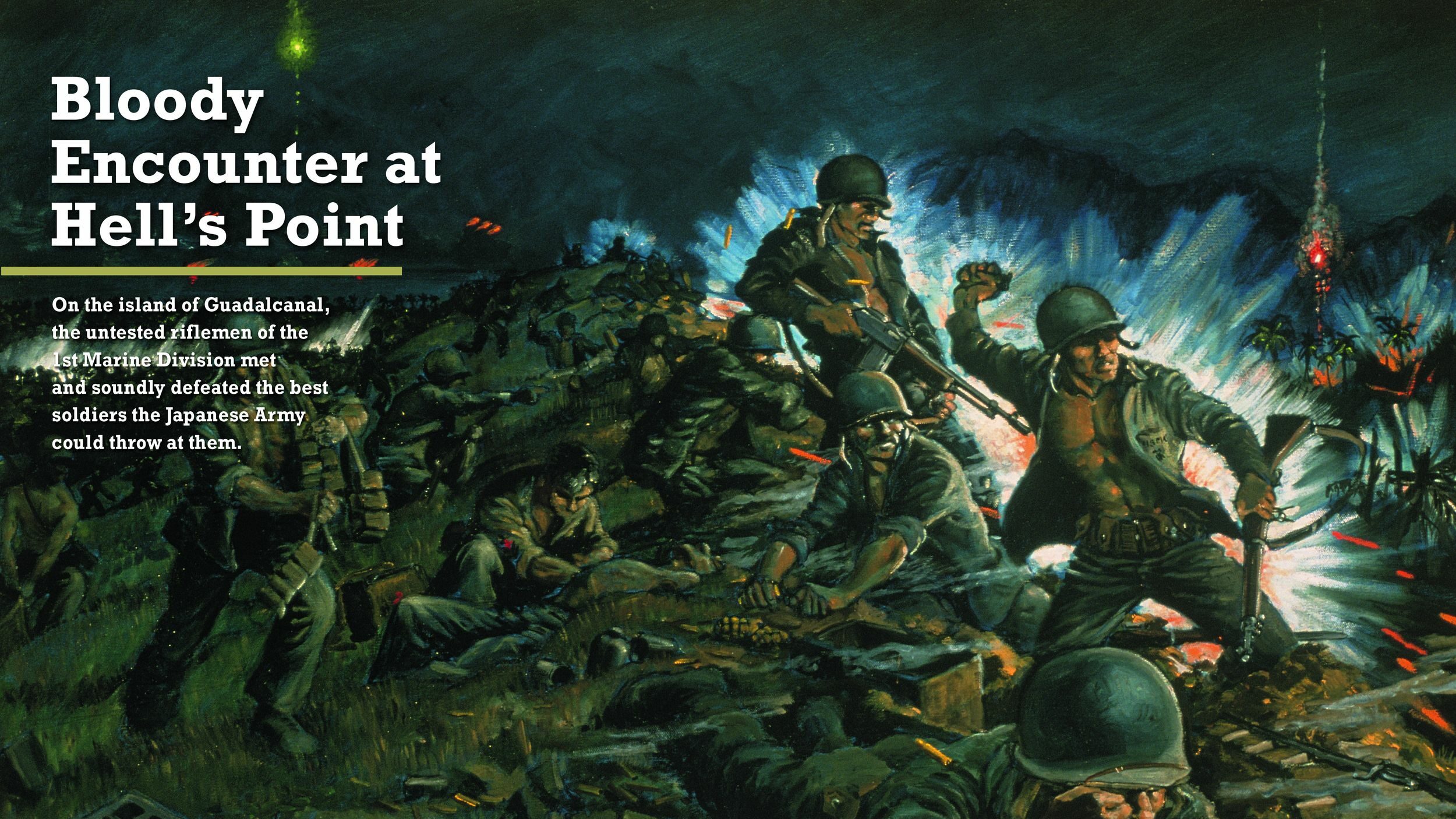
Join The Conversation
Comments
View All Comments